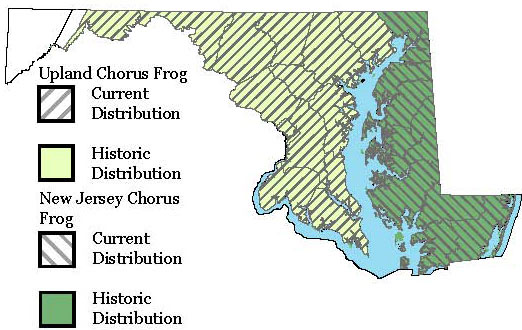Field Guide to Maryland's Frogs and Toads (Order Anura)
Main_Content
New Jersey Chorus Frog (Pseudacris kalmi) |

Adult New Jersey Chorus Frog, photo courtesy of Rebecca Chalmers

Adult New Jersey Chorus Frog, photo courtesy of John White
| | Former Name: |
Size:
|
Appearance: |
Habitats: |
How to Find: |
Distribution in Maryland:New Jersey Chorus Frogs are primarily found on the eastern shore while Upland Chorus Frogs mostly occur on the western shore and into part of western Maryland.  | | For More Information: |
|
